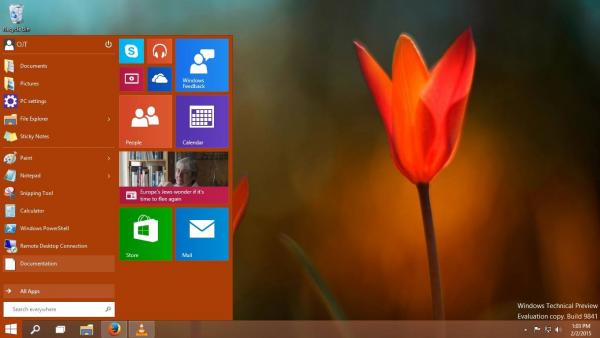
The Windows 10 Beta Preview launched its debut at Microsoft event last Wednesday January 21, 2015 where Redmond announced multiple hardware and software updates.
Last month, details leaked about the features of Windows 10 build (dubbed 9888), which reveals even more about what users expects from the OS when it finally arrives next year.
The build was intended to be release privately and was not scheduled to be formally pushed out to the public, but since then has been leaked online.
According to Winbeta, the build has boomed on various file-sharing sites, but users are being warned against installing it because it was not for public release that it might encounter software problems. Therefore, it's uncertain if those that will be able to install other builds or Windows 10 updates and when Microsoft releases them.
A follow-up report from the website Neowin suggests users that do opt to install build 9888 or leaked version will not be excluded from future Windows 10 updates, but because the version they installed is not supported by Microsoft, they may experience problems when they update it some time.
Windows 10 will be a free upgrade for Windows 7 and Windows 8/8.1 users during the first year. If the user doesn't upgrade in the first year of it's purchase, users will be charged. There has been some planning around pricing but Microsoft is expected to charge a one of license fee and NOT move to a subscription model.
As of January 26, 2015, the latest windows 10 build available to download is 9926. This is the first Windows 10 Build with Cortana. Cortana is a voice activated assistant allows you to search to apps, set reminders, access settings and also send messages. Microsoft has also made changes in the Start Button. It's now possible to expand it to full-screen mode with a tap. Continuum is available to try - so if you have a 2-in-1 device such as the Surface Pro 3, the interface will adapt depending on whether the keyboard is plugged in. Pairing with wireless devices is made easier. Users can do this by pressing Windows button + P. The Settings app has been also redesigned to resemble the classic Control Panel. Microsoft made such changes on the design of the Photos. Also in Maps and Windows Store apps as well.









